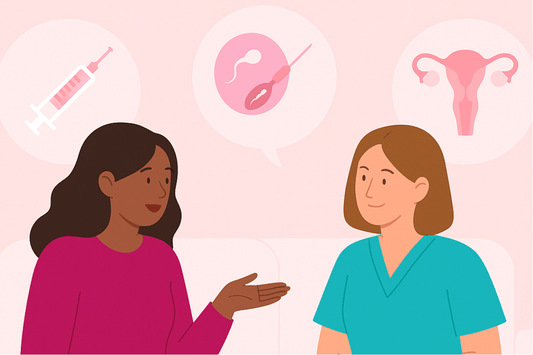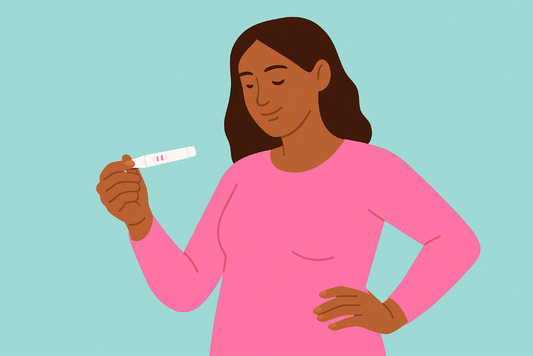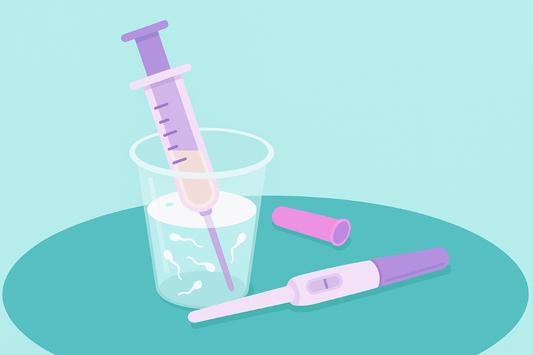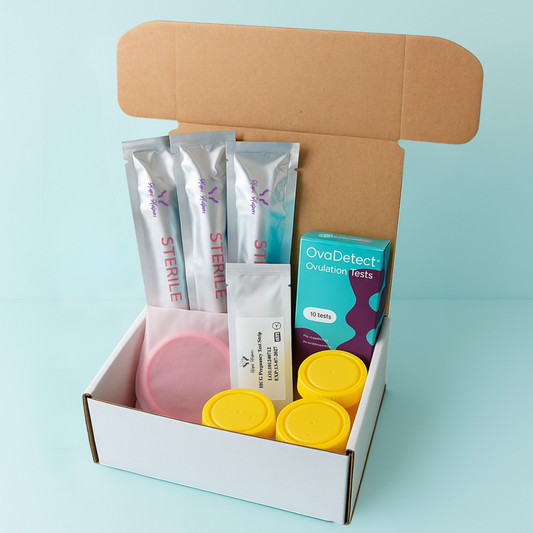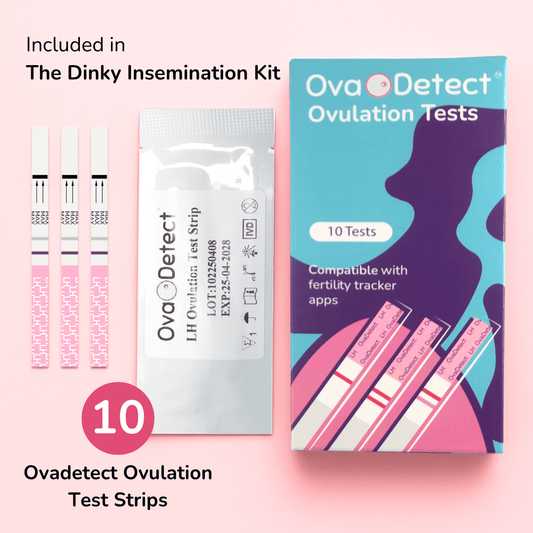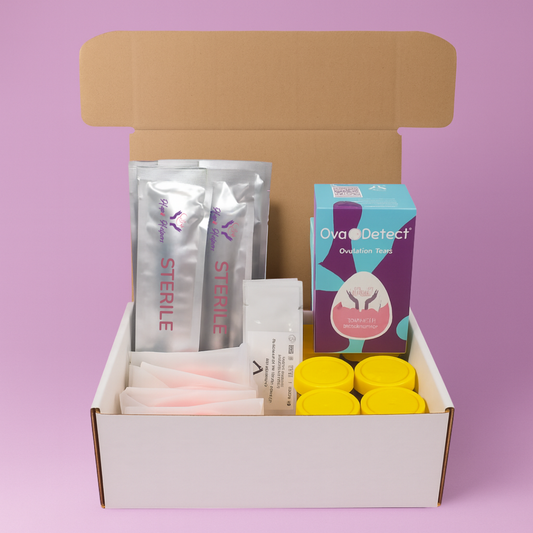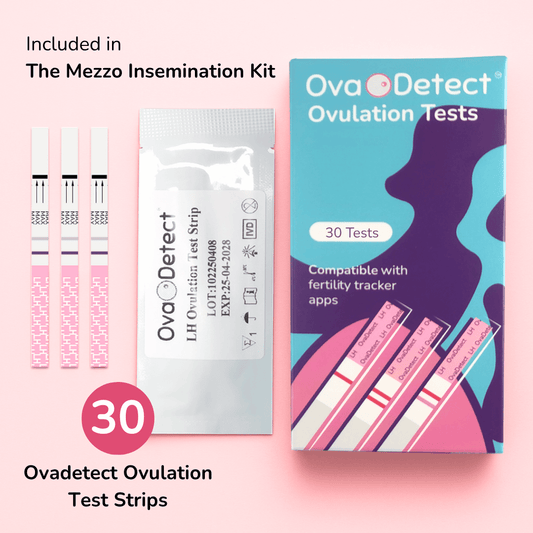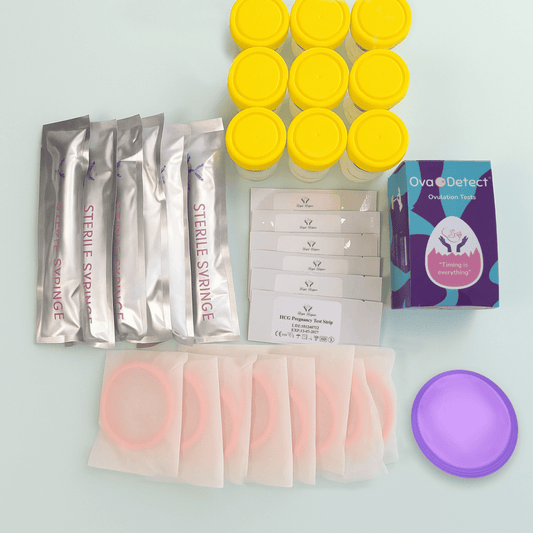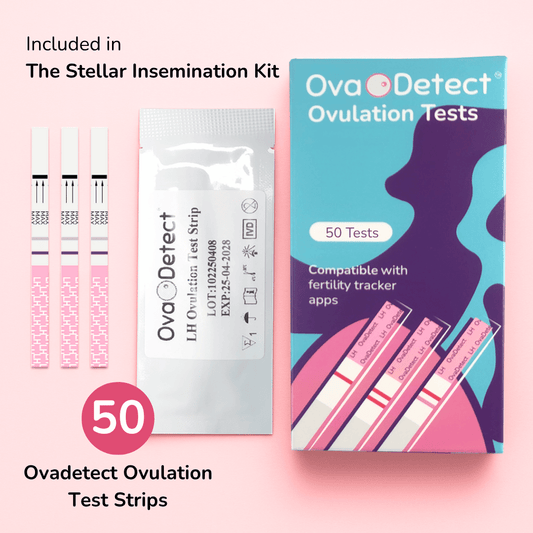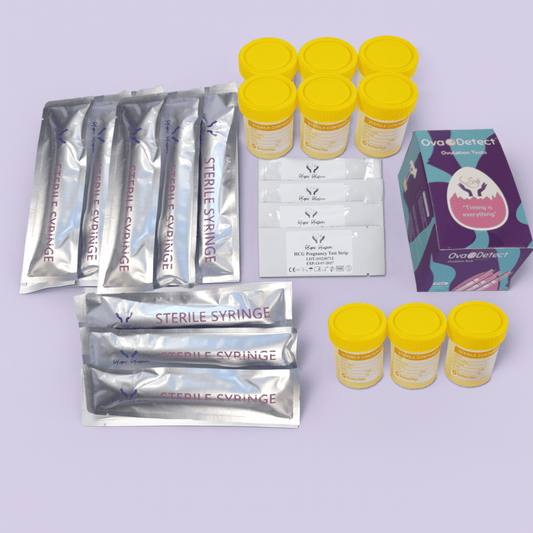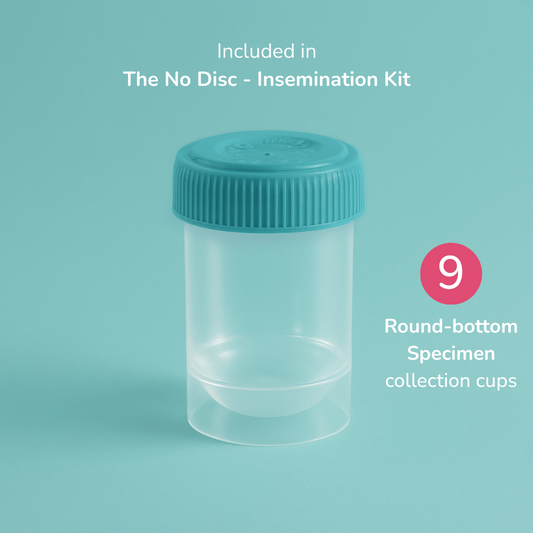A Solo Mom’s Guide to Conceiving
This guide will walk you through the steps to take as you prepare your body, mind, and environment for conception through home or clinical insemination.

Stepping Into This Journey
Choosing to become a solo mom by choice is one of the most courageous and self-affirming decisions you can make. It’s not about waiting for the “right time” or the “right partner”, it’s about choosing motherhood on your own terms. And while it can feel exciting, it’s also completely normal to feel overwhelmed about where to start, especially when artificial insemination (AI) becomes part of the plan.
Step 1: Understand Your Fertility and Health
Before you start, it’s important to understand your current fertility health. Even if you feel healthy, getting some baseline checks will help you make informed decisions.
Book an appointment with your GP or a fertility specialist and discuss:
Hormone testing: FSH, LH, AMH, and progesterone levels show how your ovaries are functioning.
Cycle tracking: Understanding your natural rhythm helps you know when you ovulate.
General health checks: Blood pressure, thyroid, iron, and vitamin D levels can all impact fertility.
If you plan to use a known donor, your doctor may recommend screening for STIs and infectious diseases for both of you before insemination. If you're using a donor, this article can help you to find out if they're suitable for you - About your donor
Step 2: Choose Your Donor
Your next big decision is choosing a sperm donor. There are two main routes:
Known donor: A friend or acquaintance you know personally. This can feel meaningful and connected but requires open communication, legal clarity, and trust.
Clinic or bank donor: An anonymous or identifiable donor from a licensed sperm bank. This option usually includes medical and genetic screening.
If you are considering a known donor for home insemination, it’s wise to seek legal advice or put an agreement in writing that clearly defines parental roles and responsibilities. Every country handles donor rights differently, so understanding your local laws will help protect everyone involved.
Thankfully we've gone through the process and have put together an article that can help you through the legal process (For New Zealanders), read here - NZ Donor Agreements & Legalities
Step 3: Learn About Artificial Insemination Options
There are two main ways to perform insemination:
Home Insemination
This involves placing sperm near the cervix using tools such as Inseminaid insemination syringes and sterile collection cups. It’s non-invasive, affordable, and can be done in the comfort of your own home. For many solo moms, this approach feels intimate and empowering.
Clinical Insemination (IUI)
Intrauterine insemination (IUI) is performed at a fertility clinic. The sperm is washed and placed directly into the uterus by a professional. It’s more precise but also more costly and clinical.
There’s no wrong choice here, some solo moms start at home and later move to clinical insemination for added support.
In this article we compared home insemination, IUI and IVF, read here - Discussing Home Insemination, IVF and IUI
Step 4: Track Your Ovulation Accurately
Timing is everything when it comes to conception. To find your fertile window, learn to track ovulation using:
Ovadetect Ovulation test strips: Detect your LH surge before ovulation.
Basal body temperature: Confirms ovulation after it occurs.
Cervical mucus observation: Fertile mucus becomes clear and stretchy like egg whites.
Combining these methods helps you predict the best days to inseminate. Most people inseminate within 24 hours of a positive LH surge for the best chance of success.
You can browse our ovulation support collection here - Ovulation Tracking
Step 5: Prepare Your Body and Space
You don’t have to overhaul your life to get pregnant, but small supportive steps can help your body and mind feel ready.
Take a prenatal supplement rich in folate.
Eat balanced, nourishing foods.
Limit caffeine and alcohol.
Prioritise rest and stress management.
Create a calm, supportive space for insemination as your environment matters.
This process can feel clinical at times, but remember, it’s also sacred. Lighting a candle, playing soft music, or journaling before insemination can turn it into a moment of self-connection and intention.
Step 6: Build Your Support Network
Going through conception solo doesn’t mean going through it alone. Surround yourself with people who uplift and understand your choice.
This might include:
Close friends or family who can provide emotional support.
Online or local groups for solo moms by choice.
Professional counsellors who specialise in fertility and family planning.
And of course, the Hāpū Helpers community exists for exactly this, a place where people at every stage of the journey can learn, connect, and feel supported.
Step 7: Decide When to Start Trying
Once you understand your cycle, have your supplies ready, and feel emotionally prepared, you can plan your first insemination cycle.
Some solo moms conceive in their first few attempts, while others take time and that’s normal. Success rates for home insemination are similar to natural conception, and persistence truly pays off.
You can draw some inspiration from our story - Our Journey – Step 3: Timed Insemination
Step 8: After Insemination
After insemination, take it easy and care for yourself. Avoid overanalyzing early symptoms, as it can cause unnecessary stress. The two-week wait can be emotionally challenging, so find distractions and keep busy if you can.
If your period doesn’t arrive after 14 days, take a pregnancy test like HcgDetect for confirmation. If it’s positive, contact your doctor to schedule your first blood test or scan.
See how our TWW went ; ) - Our Journey – Step 4: Monitor Early Signs
Choosing solo motherhood through artificial insemination is a bold, loving decision rooted in strength. It’s not the “backup plan” - it’s your plan. Whether you inseminate at home using insemination syringes, or at a clinic with professional support, what matters most is that you’re doing it your way.
Remember: every journey to conception is different, but each one begins with the same thing - hope. You don’t have to do this alone. The Hāpū Helpers community and tools are here to walk alongside you every step of the way.
"You are enough. Your path to motherhood is valid, beautiful, and entirely your own."

If you need help going through any block, talking with a TTC consultant can help! Book a FREE 15-minute virtual consult today!
Book a TTC consultation


